Warm-up exercises for gardeners
There are many benefits of gardening for healthy ageing. It's an emotionally rewarding hobby, after all.
It also happens to be an accessible and low-impact form of exercise. And one of the most important things you can do for your health as you age is exercise regularly.
But like with any strenuous physical activity, it's best to warm up your muscles before gardening and exercise.
Ways to warm-up your muscles before gardening
Before commencing gardening, it's important to get your muscles warmed up. This is because gardening can be strenuous for your lower back, as well as other parts of your body.
Stretching beforehand can help prevent injury and minimise muscle imbalances. It can improve your ability to work in the garden for longer periods of time without getting aches and pains.
Here are some gentle stretches you can try before you garden.
1. Marching on the spot
Face forward and stand straight. Have your elbows bent at 90-degree angles, to bring your hands up in front of you. Keep your feet hip width apart.
Start marching on the spot by alternating knee lifts. March with your arms at the same time.
Keep your chest open and your back straight. Make sure your breathing stays steady and slow.
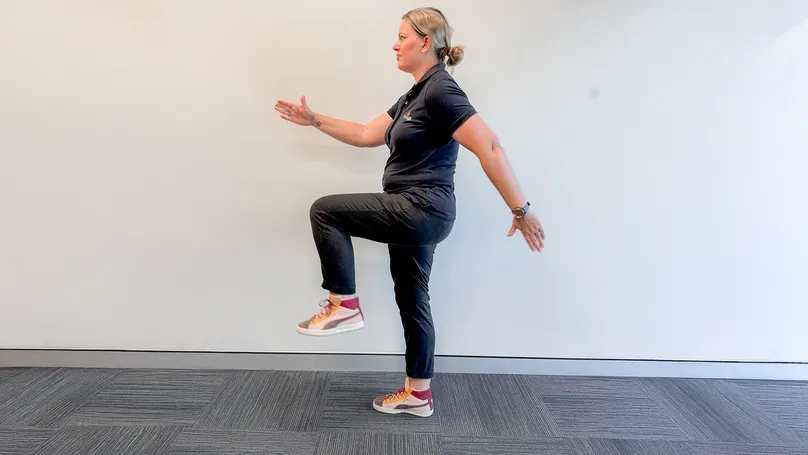
2. Knee bend
Stand with your hands by your side and knees slightly bent.
Slowly bend your knees so that you are slightly squatting, as if you're about to sit in a chair.
Adjust the level according to your capabilities.
Make sure you can see your toes when doing knee bends.

3. Shoulder rolls
Stand straight, arms by your side and feet shoulder width apart.
Relax your body.
Slowly rotate both your shoulders forward, in big circular motions.
Repeat the movement backward.
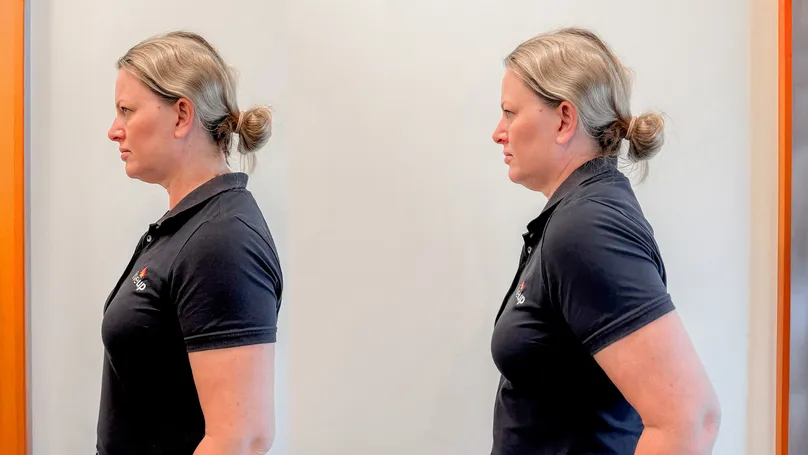
4. Side twists
Stand straight, with your feet hip width apart. Start twisting to your left, while also looking to your left. Keep your arms next to you and move them with your body.
After returning to centre, do the same for your right side.
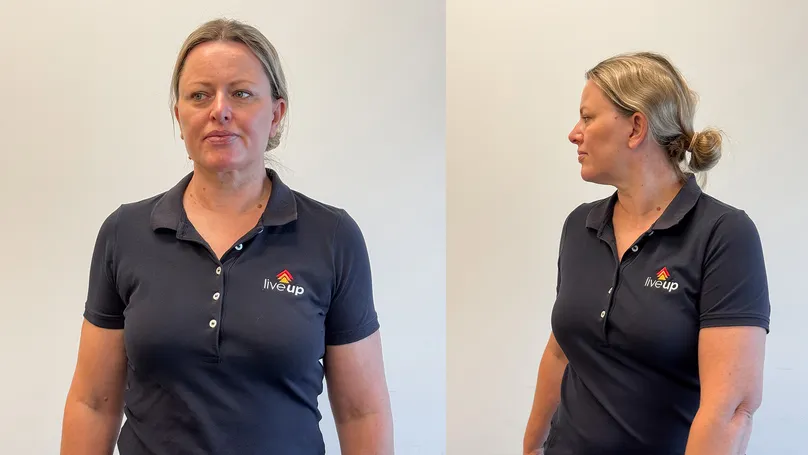
5. Hand stretches
Put your arms out straight in front of you.
Clench your fingers into a fist, then relax them, keeping your arms straight.
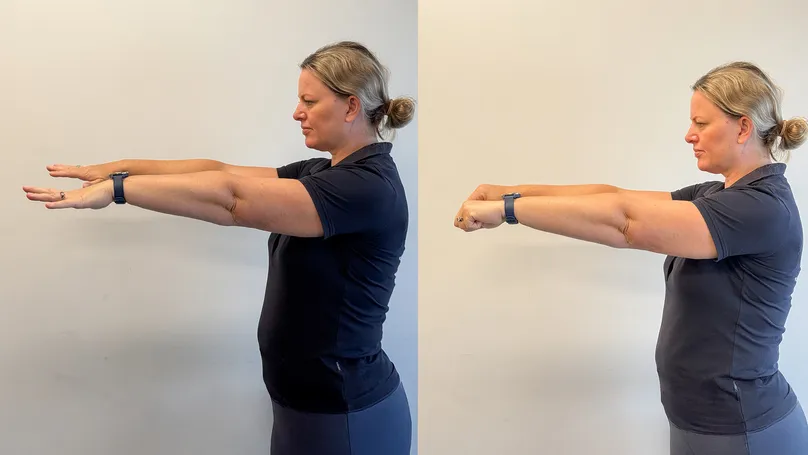
6. Wrist and forearm stretches
Point your arms straight out in front of your face, holding them up at shoulder level.
Point your wrist down and hold for 5 seconds. You can use your other hand to gently push and deepen the stretch.
Point up and hold for 5 seconds. Again, you can deepen the stretch by gently pulling with your other hand.
Repeat with the other arm.
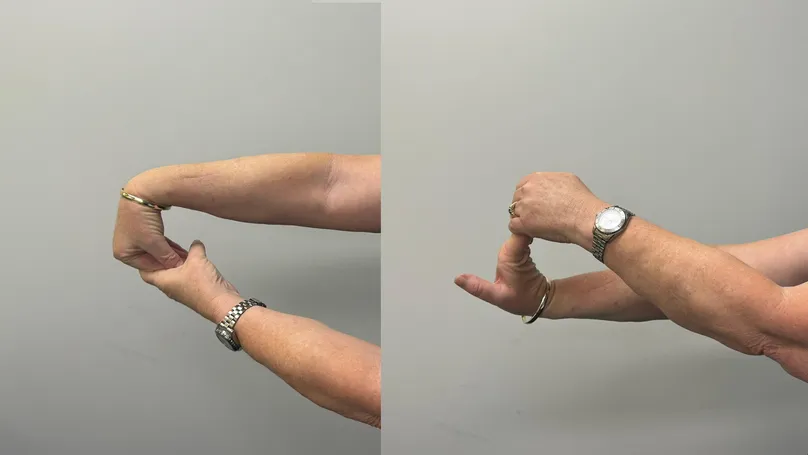
Helpful tips
- Your doctor or allied health professional can give you exercise advice that is specific to you and your condition.
- There are many assistive products for gardening that might help you prevent pain. For example, wheeled garden trays can help you avoid lifting heavy items.
- If you are in the sun, be sure to stay hydrated.
- A healthy diet can help make exercise easier and more beneficial.
Is gardening good exercise?
Working in the garden is a great example of incidental exercise. This means you can include it in your daily activities without thinking too much about it.
In fact, gardening promotes cardiovascular health, muscle strength, and joint flexibility. It works all your major muscle groups. That includes your legs, back, abdomen, arms, shoulders, and neck. You can exercise all those muscles without having to go to the gym!
The benefits of exercise
Staying active as an older adult means you can better maintain your independence. Regular physical activity can reduce your risk of falls and help you improve your balance and mobility. It helps you manage, delay, or even prevent some of the health problems that come with age. This includes type 2 diabetes, osteoporosis, osteoarthritis, high blood pressure and heart disease.
The Department of Health and Aged Care recommends 30 minutes of moderate intensity exercise daily. You can find more exercise tips for older people here.
Gardening exercise benefits
Gardening is good for your brain health, so it can support important thinking skills like memory. It can also help relieve symptoms of dementia.
Spending time outdoors under the sun can increase your levels of Vitamin D, which is essential for your bone health and immunity. Replacing stress with positive emotions can boost your immune system, too.
And gardening can indeed relieve stress. It requires focus and consideration. It can reduce your levels of cortisol (the stress hormone). This can make it a form of incidental mindfulness!
Get in touch with LiveUp
If you would like to find local exercise classes, social activities, and helpful tips, try the LiveUp quiz or chat with our friendly team for advice on freephone 1800 951 971.
References
Australian Government Department of Health and Aged Care. Physical activity and exercise guidelines for older Australians (65 years and over). https://www.health.gov.au/topics/physical-activity-and-exercise/physical-activity-and-exercise-guidelines-for-all-australians/for-older-australians-65-years-and-over
Murroni, V., Cavalli, R., Basso, A., Borella, E., Meneghetti, C., Melendugno, A., & Pazzaglia, F. (2021). Effectiveness of Therapeutic Gardens for People with Dementia: A Systematic Review. International journal of environmental research and public health, 18(18), 9595. https://doi.org/10.3390/ijerph18189595
Stellar, J. E., John-Henderson, N., Anderson, C. L., Gordon, A. M., McNeil, G. D., & Keltner, D. (2015). Positive affect and markers of inflammation: discrete positive emotions predict lower levels of inflammatory cytokines. Emotion (Washington, D.C.), 15(2), 129–133. https://doi.org/10.1037/emo0000033
Wacker, M., & Holick, M. F. (2013). Sunlight and Vitamin D: A global perspective for health. Dermato-endocrinology, 5(1), 51–108. https://doi.org/10.4161/derm.24494
Van Den Berg, A. E., & Custers, M. H. G. (2011). Gardening promotes neuroendocrine and affective restoration from stress. Health Psychology, 16(1), 3–11. https://journals.sagepub.com/doi/abs/10.1177/1359105310365577
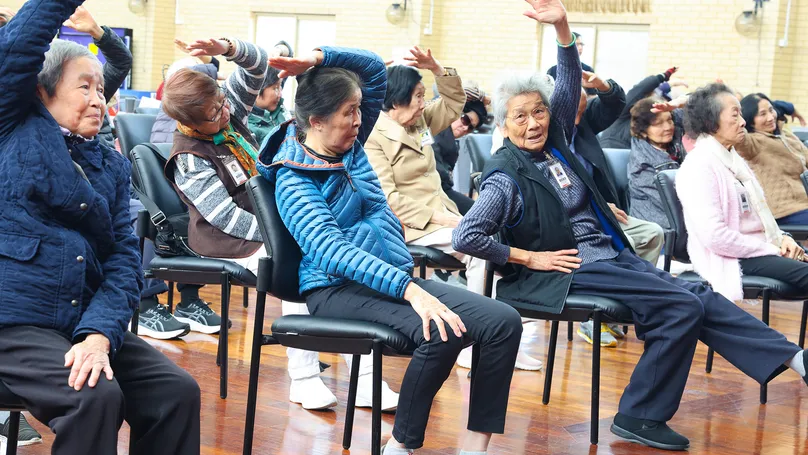
Find strength and exercise classes near you
Social Activities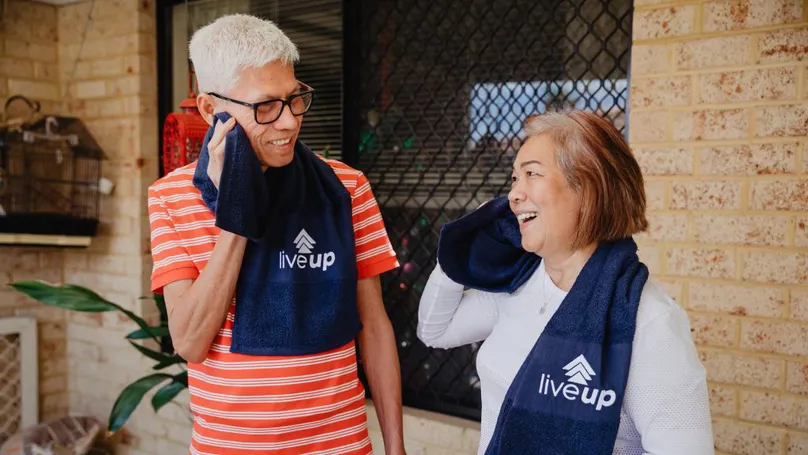
Important safety notice: exercise with caution
This exercise may not be suitable for you. Consult a health professional before beginning this exercise if you are unsure.
You may experience mild muscle soreness that lasts a few days after this exercise. Seek medical assistance if the soreness persists, if you feel any new or increasing pain, or if you feel dizzy, clammy, or short of breath.